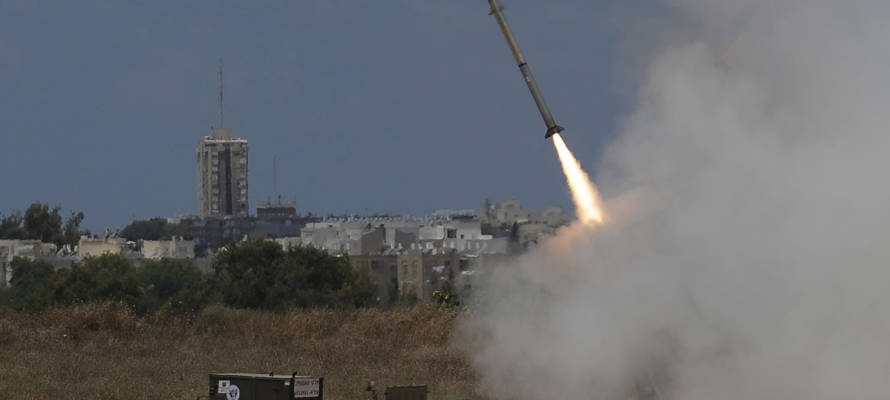During the decade since Iron Dome was first launched, the anti-missile defense system has performed over 2,400 real-life interceptions of rockets fired by various terror groups.
By Yaakov Lappin, JNS
The Israeli Defense Ministry recently announced a successful trial of what it described as an “advanced version of the Iron Dome air-defense system.”
The trial was led by Rafael Advanced Defense Systems, which produces Iron Dome, and was held in southern Israel. Symbolically, it came 10 years after the very first Iron Dome trials, held in January 2010.
Since those tests, Iron Dome has conducted more than 2,400 successful real-life interceptions rockets—most of them fired by Hamas and Palestinian Islamic Jihad from the Gaza Strip towards built-up areas in Israel.
While no details are currently available about the nature of the latest Iron upgrade, it’s clear that the changes are designed to help the system deal with future threats, such as large barrages of rockets that enemies might fire to “flood” Israeli air defenses. Other evolving threats include cruise missiles, which the Iranians have already installed in Syria, and intentions by Hezbollah and Iran to set up factories in Lebanon that convert inaccurate rockets into precision-guided missiles (Israel has indicated that it will not allow the factories to appear).
Iron Dome is one of four layers of air defenses defending Israeli skies—the others being David’s Sling for medium to long-range rockets, ballistic missiles, cruise missiles and other threats; the Arrow 2 system that blows up ballistic missiles in the upper atmosphere; and the Arrow 3 system, which hits ballistic missiles in space. No other country has a multilayered air-defense system of this scope.
Israel’s defense industries and military are continuously upgrading these systems as part of the ongoing arms race between the Jewish state and its enemies. The projectile arsenals of Hezbollah, Hamas, Palestinian Islamic Jihad and the Iranian Quds Force are pointed at Israeli cities and key strategic sites. Israel’s enemies have understood that they cannot conventionally defeat the Israel Defense Forces on the battlefield, and have therefore switched their tactics to targeting the civilian population instead.
Today, the rocket and missile threat poses the top challenge to Israeli security.
‘Remove the enemy’s capabilities to fight’
The doctrine of these terror armies is that Israel is not designed to sustain long conflicts, in which the civilian home front would come under mass, daily rocket attack, and the economy would quickly grind to a halt. As a result, air defenses play a major role in denying enemies from the ability to achieve the disruption they want.
At the same time, air defenses—no matter how advanced—will never be sufficient in the event of a full-scale conflict. Israeli population centers and key infrastructure sites would, under such a scenario, come under an unprecedented level of projectile attack, and even if 90 percent of projectiles are intercepted, the 10 percent that would get through would still cause significant physical and economic damage. This is especially true for the guided missiles that Hezbollah has already been able to equip itself with.
As the IDF Chief of Staff, Lt. Gen. Aviv Kochavi recently told Israelis, such a reality would be difficult to endure.
As a result, the Air Defense Array is only one part of the response that the IDF is preparing. The wider response is based on a rapid ground maneuver into enemy territory to destroy the systems firing on Israelis, and remove the enemy’s capabilities and willingness to fight.
Unlike other Western militaries, which conduct expeditionary missions far from their homelands and whose main immediate concern is troop security, the top objective of the IDF in any future war is the immediate security of Israeli civilians.
Offense and defense come together in that effort. The enhanced Iron Dome that was recently tested is another stepping stone in the Jewish state’s push to widen the capabilities gap between itself and the enemies.
The wider the gap, the more Israel will be able to defend its civilians and national economy from the Iranian-backed forces who hope to terrorize and disrupt.
